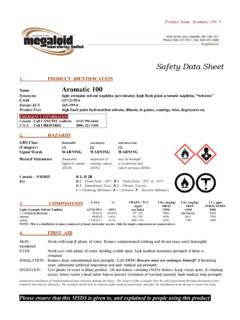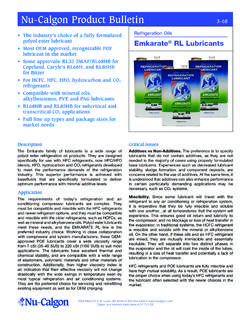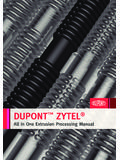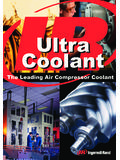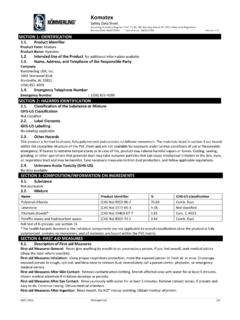Transcription of Material Safety Data Sheet Jet Fuel - Baird Oil
1 Material Safety data Sheet Jet Fuel NFPA: Flammability HMIS III: 2 HEALTH 1. Reactivity FLAMMABILITY 2. 1 0. Health PHYSICAL 0. 0 = Insignificant, 1 = Slight, 2 = Moderate, Specific Hazard 3 = high , 4 = Extreme SECTION 1. product AND COMPANY IDENTIFICATION. product name : Jet Fuel Synonyms : Kerosene - Dual Purpose, K1, K2, Dyed K1, Jet Fuel - A, B, A-I , A-50, high Sulfur, Military, Jet A & B Aviation Turbine Fuel,, Jet A-I, Jet A, Avjet for Blending, 888100004452. MSDS Number : 888100004452 Version : product Use Description : Fuel Company : For: Tesoro Refining & Marketing Co. 300 Concord Plaza Drive, San Antonio, TX 78216-6999. Tesoro Call Center : (877) 783-7676 Chemtrec : (800) 424-9300. (Emergency Contact). SECTION 2. HAZARDS IDENTIFICATION. Emergency Overview Regulatory status : This Material is considered hazardous by the Occupational Safety and Health Administration (OSHA) Hazard Communication Standard (29 CFR ).
2 Signal Word : WARNING. Hazard Summary : Harmful or fatal if swallowed. Harmful by inhalation. Irritating to eyes, respiratory system and skin. Affects central nervous system. Flammable. Potential Health Effects Eyes : Severe eye irritant. Contact may cause stinging, watering, redness, swelling, and eye damage. Skin : Prolonged or repeated skin contact with liquid may cause defatting resulting in drying, redness and possible blistering. Practically non-toxic if absorbed following acute (single) exposure. Liquid may be absorbed through the skin in toxic amounts if large areas of skin are repeatedly exposed. Ingestion : Ingestion may cause gastrointestinal disturbances, including irritation, nausea, vomiting and diarrhea, and central nervous (brain) effects similar to alcohol intoxication. In severe cases, tremors, convulsions, loss of consciousness, coma, respiratory arrest and death may occur.
3 Inhalation : Inhalation of fumes or mist may result in respiratory tract irritation and central nervous system (brain) effects may include headache, dizziness, loss of balance and coordination, unconsciousness, coma, respiratory failure, and death. WARNING: the burning of any hydrocarbon as a fuel in an area without Material Safety data Sheet Jet Fuel Page 2 of 8. adequate ventilation may result in hazardous levels of combustion products, including carbon monoxide, and inadequate oxygen levels, which may cause unconsciousness, suffocation, and death. Chronic Exposure : Similar products produced skin cancer and systemic toxicity in laboratory animals following repeated applications. The significance of these results to human exposures has not been determined - see Section 11 Toxicological Information. Target Organs : Eyes, Skin, Respiratory system, Irritation from skin exposure may aggravate existing open wounds, skin disorders, and dermatitis (rash).
4 SECTION 3. COMPOSITION/INFORMATION ON INGREDIENTS. Component CAS-No. Weight %. Kerosene (petroleum) 8008-20-6 100%. Naphthalene 91-20-3 Ethyl Benzene 100-41-4 0 to SECTION 4. FIRST AID MEASURES. Inhalation : If inhaled, remove to fresh air. If not breathing, give artificial respiration. If necessary, provide additional oxygen once breathing is restored if trained to do so. Seek medical attention immediately. Skin contact : Take off all contaminated clothing immediately. Wash off immediately with soap and plenty of water. Wash contaminated clothing before re-use. If skin irritation persists, seek medical attention. Eye contact : In case of eye contact, remove contact lens and rinse immediately with plenty of water, also under the eyelids, for at least 15 minutes. Seek medical attention immediately. Ingestion : Do NOT induce vomiting. Do not give liquids. Seek medical attention immediately.
5 If vomiting does occur naturally, keep head below the hips to reduce the risks of aspiration. Monitor for breathing difficulties. Small amounts of Material which enter the mouth should be rinsed out until the taste is dissipated. Notes to physician : Symptoms: Aspiration may cause pulmonary edema and pneumonitis. Treatment: Do not induce vomiting, use gastric lavage only. Remove from further exposure and treat symptomatically. SECTION 5. FIRE-FIGHTING MEASURES. Form : Liquid Flash point : 38 C (100 F). Auto Ignition temperature : 210 C (410 F). Lower explosive limit : %(V). Upper explosive limit : %(V). 2/8. Material Safety data Sheet Jet Fuel Page 3 of 8. Suitable extinguishing media : Carbon dioxide (CO2), Water spray, Dry chemical, Foam, Keep containers and surroundings cool with water spray., Do not use a solid water stream as it may scatter and spread fire., Water may be ineffective for fighting the fire, but may be used to cool fire-exposed containers.
6 Specific hazards during fire : Fire Hazard. Do not use a solid water stream as it may scatter and spread fire. fighting Cool closed containers exposed to fire with water spray. Sealed containers may rupture when heated. Above the flash point, explosive vapor-air mixtures may be formed. Vapors can flow along surfaces to distant ignition source and flash back. Special protective equipment : Firefighting activities that may result in potential exposure to high heat, smoke or for fire-fighters toxic by-products of combustion should require NIOSH/MSHA- approved pressure- demand self-contained breathing apparatus with full facepiece and full protective clothing. Further information : Exposure to decomposition products may be a hazard to health. Standard procedure for chemical fires. SECTION 6. ACCIDENTAL RELEASE MEASURES. Personal precautions : ACTIVATE FACILITY'S SPILL CONTINGENCY OR EMERGENCY RESPONSE.
7 PLAN if applicable. Evacuate nonessential personnel and remove or secure all ignition sources. Consider wind direction; stay upwind and uphill, if possible. Evaluate the direction of product travel, diking, sewers, etc. to contain spill areas. Spills may infiltrate subsurface soil and groundwater; professional assistance may be necessary to determine the extent of subsurface impact. Environmental precautions : Carefully contain and stop the source of the spill, if safe to do so. Protect bodies of water by diking, absorbents, or absorbent boom, if possible. Do not flush down sewer or drainage systems, unless system is designed and permitted to handle such Material . The use of fire fighting foam may be useful in certain situations to reduce vapors. The proper use of water spray may effectively disperse product vapors or the liquid itself, preventing contact with ignition sources or areas/equipment that require protection.
8 Methods for cleaning up : Take up with sand or oil absorbing materials. Carefully shovel, scoop or sweep up into a waste container for reclamation or disposal - caution, flammable vapors may accumulate in closed containers. Response and clean-up crews must be properly trained and must utilize proper protective equipment (see Section 8). CERCLA Hazardous substances and corresponding RQs : Naphthalene 91-20-3 100 lbs Ethylbenzene 100-41-4 1,000 lbs SECTION 7. HANDLING AND STORAGE. Handling : Keep away from fire, sparks and heated surfaces. No smoking near areas where Material is stored or handled. The product should only be stored and handled in areas with intrinsically safe electrical classification. Advice on protection against : Hydrocarbon liquids including this product can act as a non-conductive flammable fire and explosion liquid (or static accumulators), and may form ignitable vapor-air mixtures in storage tanks or other containers.
9 Precautions to prevent static-initated fire or explosion during transfer, storage or handling, include but are not limited to these examples: (1) Ground and bond containers during product transfers. Grounding and bonding may not be adequate protection to prevent ignition or explosion of 3/8. Material Safety data Sheet Jet Fuel Page 4 of 8. hydrocarbon liquids and vapors that are static accumulators. (2) Special slow load procedures for "switch loading" must be followed to avoid the static ignition hazard that can exist when higher flash point Material (such as fuel oil or diesel) is loaded into tanks previously containing low flash point products (such gasoline or naphtha). (3) Storage tank level floats must be effectively bonded. For more information on precautions to prevent static-initated fire or explosion, see NFPA 77, Recommended Practice on Static Electricity (2007), and API.
10 Recommended Practice 2003, Protection Against Ignitions Arising Out of Static, Lightning, and Stray Currents (2008). Dust explosion class : Not applicable Requirements for storage : Keep away from flame, sparks, excessive temperatures and open flame. Use areas and containers approved containers. Keep containers closed and clearly labeled. Empty or partially full product containers or vessels may contain explosive vapors. Do not pressurize, cut, heat, weld or expose containers to sources of ignition. Store in a well-ventilated area. The storage area should comply with NFPA 30 "Flammable and Combustible Liquid Code". The cleaning of tanks previously containing this product should follow API Recommended Practice (RP) 2013 "Cleaning Mobile Tanks In Flammable and Combustible Liquid Service" and API RP 2015 "Cleaning Petroleum Storage Tanks". Advice on common storage : Keep away from food, drink and animal feed.
